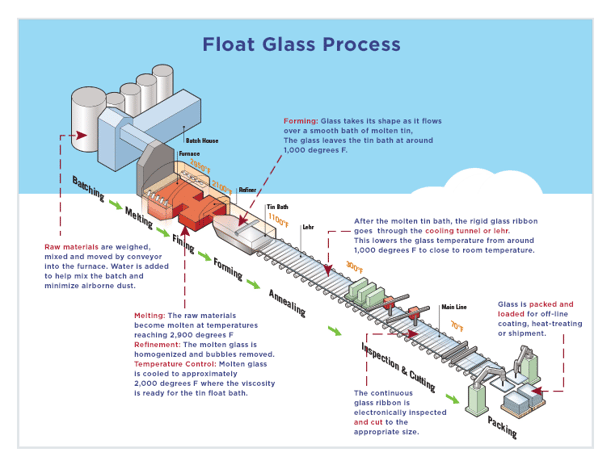The Float Glass Process is a multi-step glass manufacturing process where liquid glass is formed by "floating" it on molten metal.
First, raw materials are weighed, mixed and moved by conveyor from the initial batch house into the furnace. Water is added to help mix the batch and minimize airborne dust.
Inside the furnace, the raw materials become molten at temperatures reaching 2,900 degrees Fahrenheit. The molten glass is refined by homogenizing the material and removing bubbles.
In order to reach the acceptable viscosity for the following float bath in tin, the glass is cooled to approximately 2,000 degrees Fahrenheit.
After the molten tin bath, the rigid glass ribbon goes through the cooling tunnel, or lehr. This process lowers the glass temperature from around 1,000 degrees Fahrenheit to cool to room temperature.
Now on the main conveyor line, the continuous glass ribbon is electronically inspected and cut to the appropriate size.
Finally, the glass is packed and loaded for off-line coating, heat-treating or shipment.
For more information on how glass is made, read How Glass is Made – From the Batch House to the Lehr. For any other glass questions, please contact Vitro Glass or call 1-855-VTRO-GLS (1-855-887-6457).
Updated on August 25, 2023





